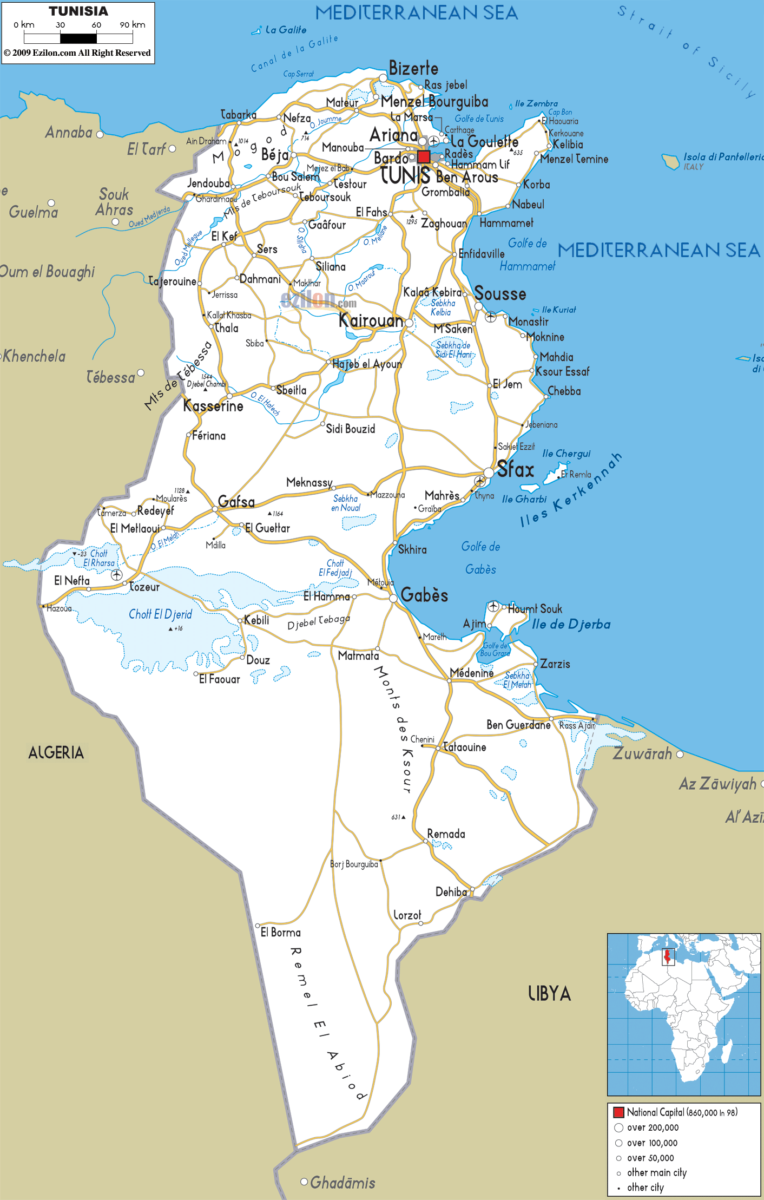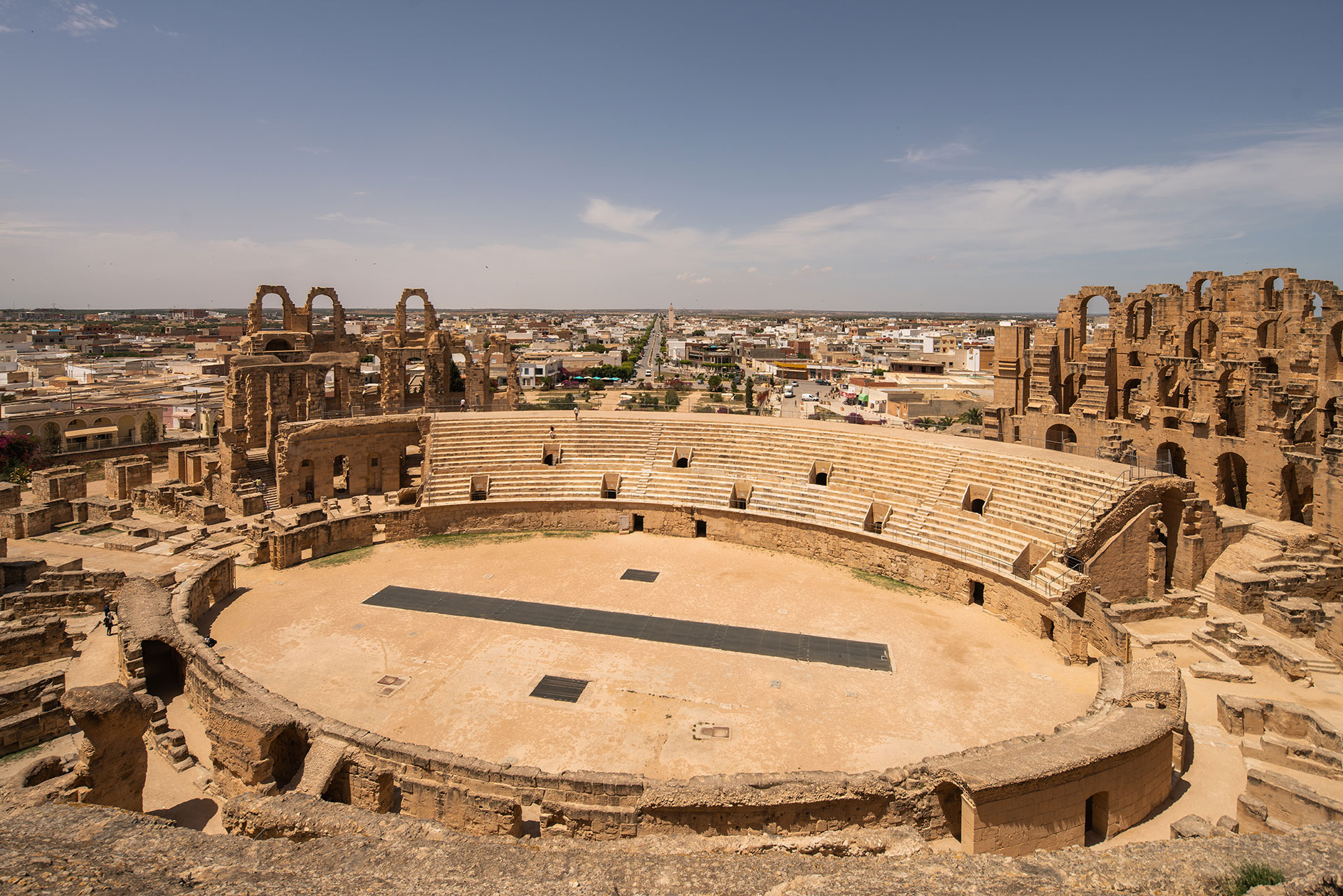The 8 world heritage sites in Tunisia
The 8 world heritage sites in Tunisia are worth it besides the possibility to visit the Sahara Desert, and all its relief forms, in a very short time , see the excursion “Do you want to visit the entire Tunisian desert in just 8 days?” that we propose, which is a real privilege.
Tunisia is a small country geographically speaking, which makes it easy to visit by road, where you will find an extraordinary wealth of culture and history.
We, at “VISITTHESAHARA”, present you with some World Heritage Sites (of the eight in total that Tunisia has), which we describe below, and which you may be interested in visiting to get to know the part of Tunisia outside the desert, which you can discover during a short stay, without having to travel many kilometers, or combine with some stages in the Sahara Desert if you have more time.
In any case, we present you with different alternatives, because our aim is to advise you as best as possible and, if you are interested, to design a tailor-made circuit that allows you to fully enjoy your stay in Tunisia with your family and/or friends, according to your preferences, budget, and time available.
The 8 world heritage sites in Tunisia
The 8 world heritage sites in Tunisia are worth it besides the possibility to visit the Sahara Desert, and all its relief forms, in a very short time , see the excursion “Do you want to visit the entire Tunisian desert in just 8 days?” that we propose, which is a real privilege.
Tunisia is a small country geographically speaking, which makes it easy to visit by road, where you will find an extraordinary wealth of culture and history.
We, at “VISITTHESAHARA”, present you with some World Heritage Sites (of the eight in total that Tunisia has), which we describe below, and which you may be interested in visiting to get to know the part of Tunisia outside the desert, which you can discover during a short stay, without having to travel many kilometers, or combine with some stages in the Sahara Desert if you have more time.
In any case, we present you with different alternatives, because our aim is to advise you as best as possible and, if you are interested, to design a tailor-made circuit that allows you to fully enjoy your stay in Tunisia with your family and/or friends, according to your preferences, budget, and time available.
Tunisia has 2 World Heritage Medinas that are worth visiting
The Medina of Tunis was declared a World Heritage Site in 1979.
The Medina of Tunis is a historic urban complex dating back to the 8th century and is considered one of the best examples of a medieval Islamic city that has survived to the present day.
The Medina of Sousse, located on the coast, very close to Tunis, only 1h30mn by car on the motorway, was declared a World Heritage Site in 1988 for its great state of preservation.
It is a walled city dating back to the 9th century and is considered one of the oldest cities in the Arab world.
You can explore these medinas walking through their labyrinths of narrow streets and see their impressive Islamic architecture, as well as bargain for some souvenirs including typical souvenirs, ceramics, jewelry (gold and silver), fabrics, leather (“babouches and poufs” for example) but also some very traditional products such as “Chéchia” in Tunisia and spices in Sousse. You can also try some Maghreb specialties such as mint tea, and food such as Maghrebi cakes (very sweet with honey and almonds) and skewers with their very spicy sauce such as the famous “harissa“ (حريصا) originating from the Tunisian city of Nabeul in Cap Bon.

Tunisia has 2 World Heritage Medinas that are worth visiting
The Medina of Tunis was declared a World Heritage Site in 1979.
The Medina of Tunis is a historic urban complex dating back to the 8th century and is considered one of the best examples of a medieval Islamic city that has survived to the present day.
The Medina of Sousse, located on the coast, very close to Tunis, only 1h30mn by car on the motorway, was declared a World Heritage Site in 1988 for its great state of preservation.
It is a walled city dating back to the 9th century and is considered one of the oldest cities in the Arab world.
You can explore these medinas walking through their labyrinths of narrow streets and see their impressive Islamic architecture, as well as bargain for some souvenirs including typical souvenirs, ceramics, jewelry (gold and silver), fabrics, leather (“babouches and poufs” for example) but also some very traditional products such as “Chéchia” in Tunisia and spices in Sousse. You can also try some Maghreb specialties such as mint tea, and food such as Maghrebi cakes (very sweet with honey and almonds) and skewers with their very spicy sauce such as the famous “harissa“ (حريصا) originating from the Tunisian city of Nabeul in Cap Bon.

Tunisia also has magnificent beaches, coves and coastline
It is impossible to talk about places to visit in Tunisia without mentioning its spectacular beaches, coves and several charming coastal towns such as Sidi Bou Said, Hammamet, Port el Kantaoui, Kelibia…
Although there are magnificent beaches in Spain, if you like coastal tourism, there are emblematic places like Sidi Bou Said that are worth a visit. It is a place that brings together the essence of a typical Mediterranean village, in the image and likeness of the villages of the Greek islands, which have inspired it to preserve the beautiful combination of white and blue colors that bathe all its buildings.
Tunisia also has magnificent beaches, coves and coastline
It is impossible to talk about places to visit in Tunisia without mentioning its spectacular beaches, coves and several charming coastal towns such as Sidi Bou Said, Hammamet, Port el Kantaoui, Kelibia…
Although there are magnificent beaches in Spain, if you like coastal tourism, there are emblematic places like Sidi Bou Said that are worth a visit. It is a place that brings together the essence of a typical Mediterranean village, in the image and likeness of the villages of the Greek islands, which have inspired it to preserve the beautiful combination of white and blue colors that bathe all its buildings.
Kairouan the fourth holiest city in Islam is one of the 8 world heritage sites in Tunisia
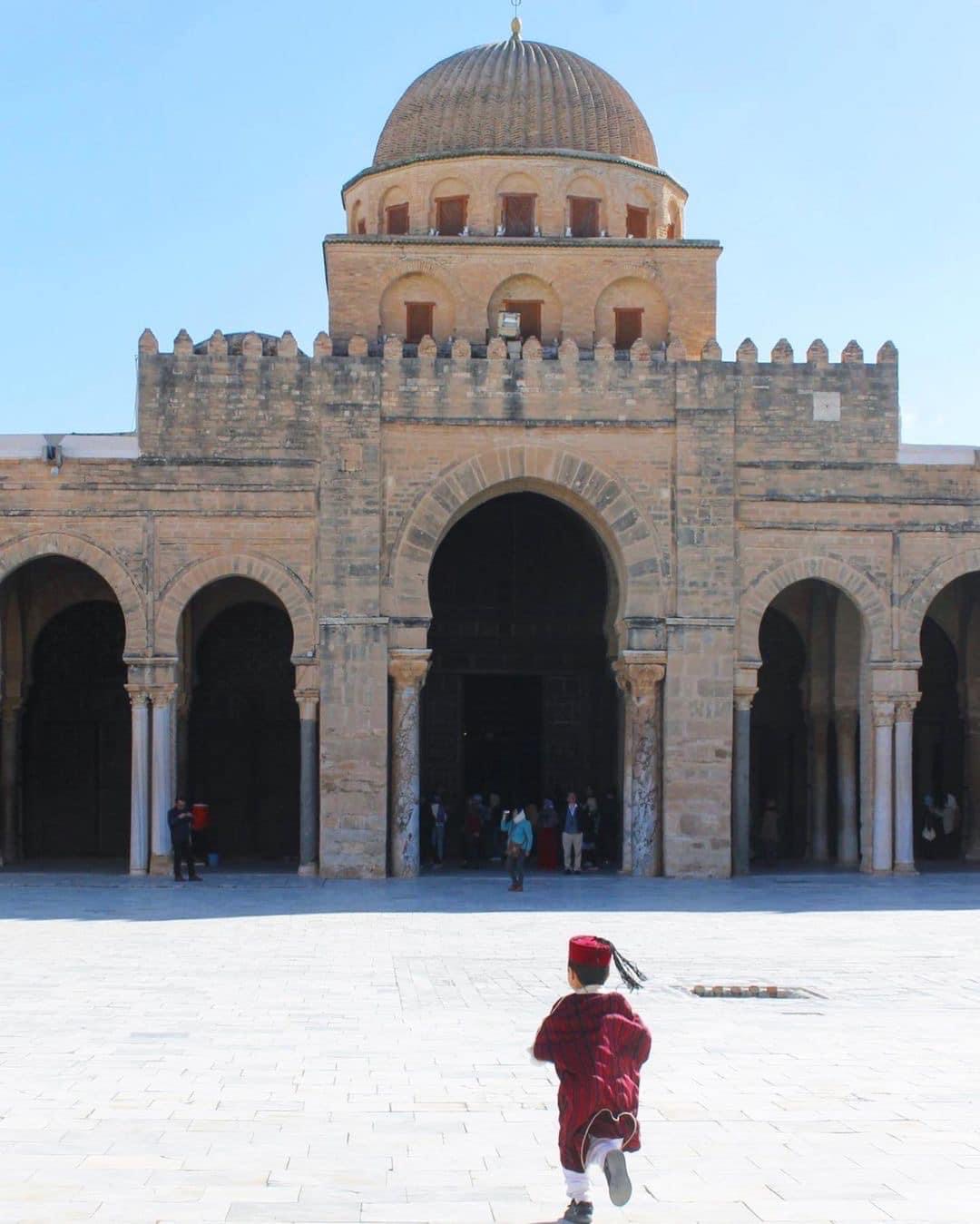
Kairouan (located just a 2-hour drive along the highway south of Tunis) is the fourth holiest city of the Muslim faith and a major destination for Islamic religious pilgrimage to its famous mosque.
For both its long history and its mosque(s), Kairouan was also recognized as a UNESCO World Heritage Site in 1988.
Non-Muslims may enter the mosque, although the prayer hall is off-limits, but its door is usually left open to look in.
Kairouan is also known for its tapestries and for the highly prized Maghreb sweet, made from semolina and dates, the very good “Makrout, مقروط” cake (a cake made from honey and almonds).
Of course, you can’t leave Kairouan without taking a bath in one of its famous Hammams.
Kairouan the fourth holiest city in Islam is one of the 8 world heritage sites in Tunisia
Kairouan (located just a 2-hour drive along the highway south of Tunis) is the fourth holiest city of the Muslim faith and a major destination for Islamic religious pilgrimage to its famous mosque.
For both its long history and its mosque(s), Kairouan was also recognized as a UNESCO World Heritage Site in 1988.
Non-Muslims may enter the mosque, although the prayer hall is off-limits, but its door is usually left open to look in.
Kairouan is also known for its tapestries and for the highly prized Maghreb sweet, made from semolina and dates, the very good “Makrout, مقروط” cake (a cake made from honey and almonds).
Of course, you can’t leave Kairouan without taking a bath in one of its famous Hammams.

The largest Roman amphitheater outside Italy is in El Jem, and it is one of the 8 world heritage sites in Tunisia
No, this is not Rome in Italy! This amphitheater of El Djem is a Roman coliseum but located in the city of El Djem, just 2 hours’ drive from Tunis. It is the largest Roman amphitheater in Africa and the fourth largest in the world, after the Colosseum in Rome, the amphitheater of Capua and the amphitheater of Verona. It was built entirely of blocks and without foundations and is said to have been inspired by the Roman Colosseum.
The largest Roman amphitheater outside Italy is in El Jem, and it is one of the 8 world heritage sites in Tunisia
No, this is not Rome in Italy! This amphitheater of El Djem is a Roman coliseum but located in the city of El Djem, just 2 hours’ drive from Tunis. It is the largest Roman amphitheater in Africa and the fourth largest in the world, after the Colosseum in Rome, the amphitheater of Capua and the amphitheater of Verona. It was built entirely of blocks and without foundations and is said to have been inspired by the Roman Colosseum.
If you are passionate about archaeology then you must visit Tunisia
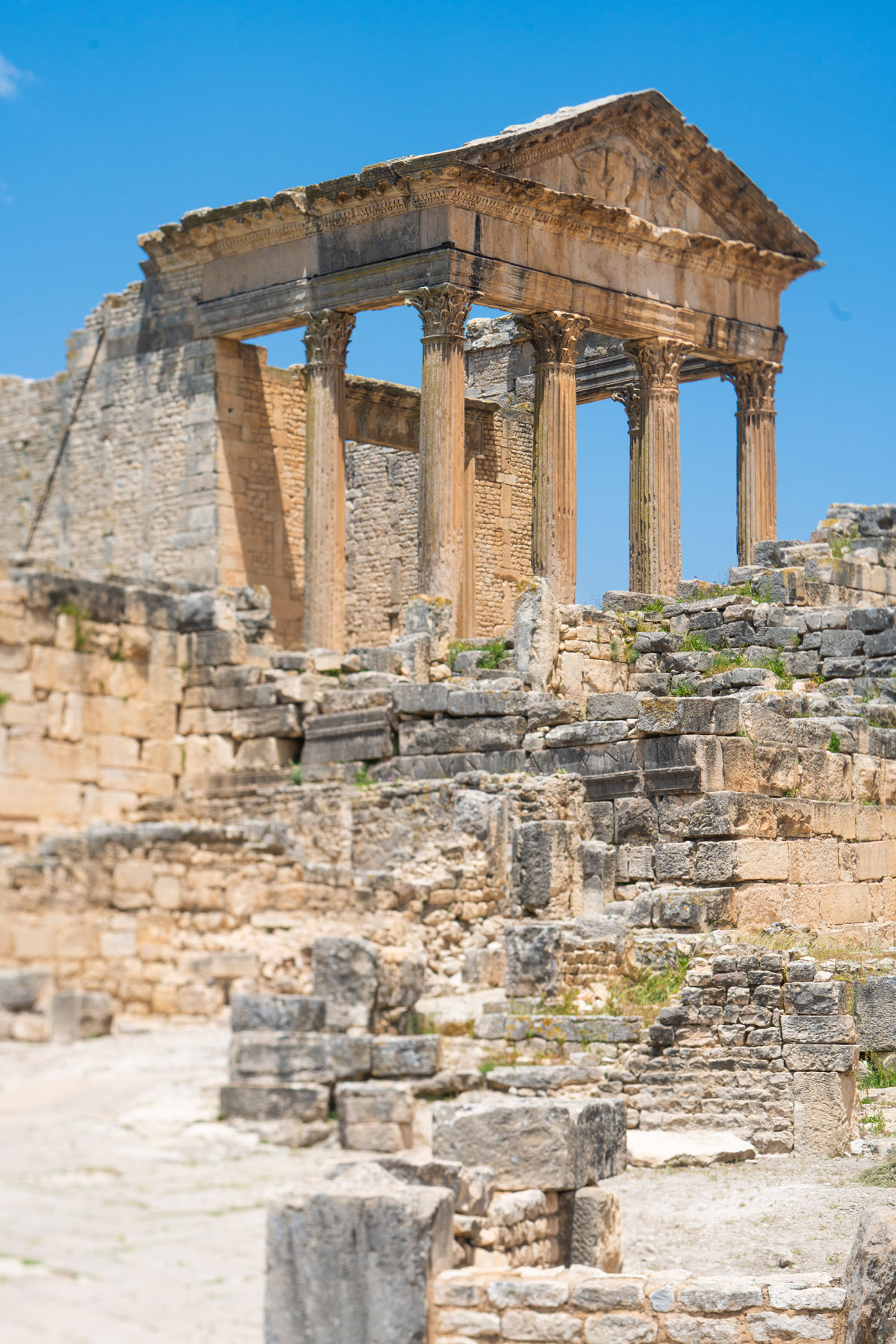
The ruins of Carthage are of Punic and Roman origin and were declared a UNESCO World Heritage Site in 1979.
Dougga was a Berber, Punic and Roman settlement in northern Tunisia and extends over 65 hectares. UNESCO designated Dougga as a World Heritage Site in 1997 because it represents "the best preserved small Roman town in North Africa".
Kerkouane is a Punic city that survived for about 400 years and was one of the most important Punic cities along with Carthage. It is located on the peninsula of Cape Bon where you can also find natural and uncrowded coves, all close to the capital Tunis.
If you are passionate about archaeology then you must visit Tunisia
The ruins of Carthage are of Punic and Roman origin and were declared a UNESCO World Heritage Site in 1979.
Dougga was a Berber, Punic and Roman settlement in northern Tunisia and extends over 65 hectares. UNESCO designated Dougga as a World Heritage Site in 1997 because it represents "the best preserved small Roman town in North Africa".
Kerkouane is a Punic city that survived for about 400 years and was one of the most important Punic cities along with Carthage. It is located on the peninsula of Cape Bon where you can also find natural and uncrowded coves, all close to the capital Tunis.

Come to Tunisia and try Couscous with fish and the famous spicy harissa sauce
Fish couscous, or sékssou bel hout (سكسو بالحوت), is a traditional couscous from the Sfax region of Tunisia. The recipe for fish couscous varies depending on the region and the cook, but generally includes white fish such as hake or monkfish, and is served with a spicy sauce, the famous harissa. If you like couscous, you must try this variation. As you will see in the video "Discover Tunisia through its culinary specialties" Tunisia has many other traditional dishes that you will love to try, such as its excellent salads, with local vegetables, its incredible olive oil and of course its famous harissa combined with a little bread.
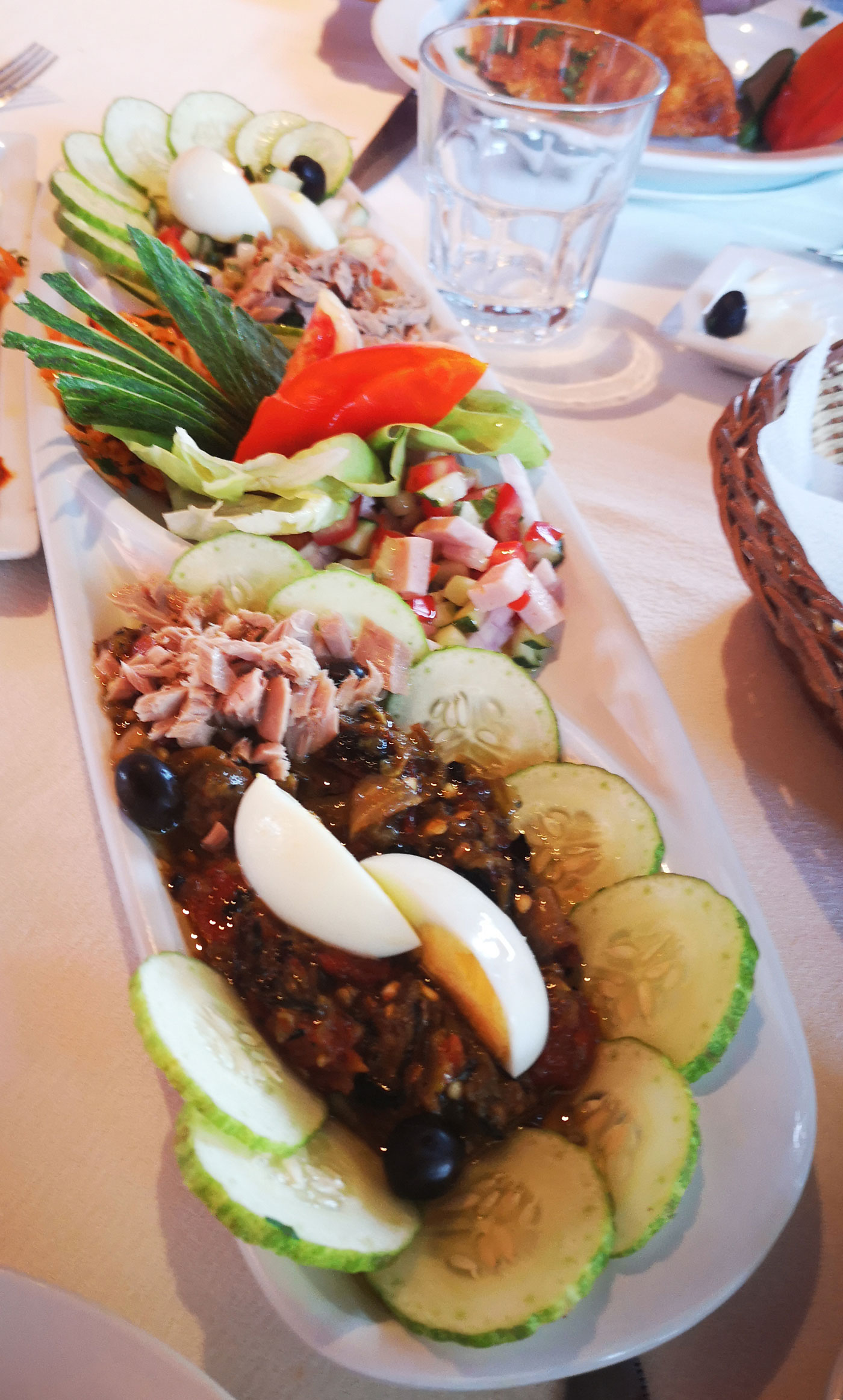
Come to Tunisia and try Couscous with fish and the famous spicy harissa sauce
Fish couscous, or sékssou bel hout (سكسو بالحوت), is a traditional couscous from the Sfax region of Tunisia. The recipe for fish couscous varies depending on the region and the cook, but generally includes white fish such as hake or monkfish, and is served with a spicy sauce, the famous harissa. If you like couscous, you must try this variation. As you will see in the video "Discover Tunisia through its culinary specialties" Tunisia has many other traditional dishes that you will love to try, such as its excellent salads, with local vegetables, its incredible olive oil and of course its famous harissa combined with a little bread.


Discover TUNISIA through its route of culinary specialities
Discover TUNISIA by car
Need more information
REVIEWS
We haven`t our own reviews yet but we are going to work to get them and we will publish them here

